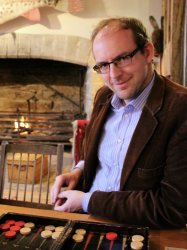BibTex format
@unpublished{Koopmans:2019,
author = {Koopmans, L and Barkana, R and Bentum, M and Bernardi, G and Boonstra, A-J and Bowman, J and Burns, J and Chen, X and Datta, A and Falcke, H and Fialkov, A and Gehlot, B and Gurvits, L and Jeli, V and Klein-Wolt, M and Koopmans, L and Lazio, J and Meerburg, D and Mellema, G and Mertens, F and Mesinger, A and Offringa, A and Pritchard, J and Semelin, B and Subrahmanyan, R and Silk, J and Trott, C and Vedantham, H and Verde, L and Zaroubi, S and Zarka, P},
publisher = {arXiv},
title = {Peering into the dark (Ages) with low-frequency space interferometers},
url = {http://arxiv.org/abs/1908.04296v1},
year = {2019}
}

